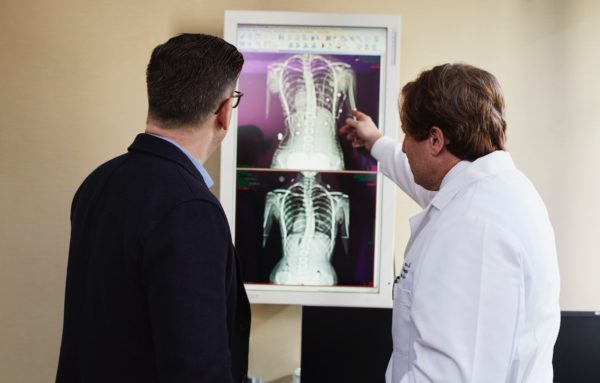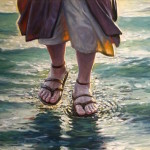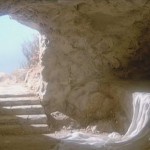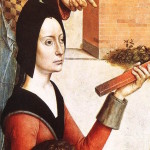The Science of Miracles
by Joe Heschmeyer
Filed under Science, The Church

What happens when an atheist doctor and historian is given access to the Vatican’s Secret Archives to investigate miracle claims? Just such a thing happened in the early 2000s, and both the story behind it, and the doctor’s conclusions, are worth recounting.
Dr. Jacalyn Duffin, a hematologist (M.D.) and historian (Ph.D.), was the Hannah Chair of the History of Medicine at Queen’s University from 1988 until 2017, and she’s served as both the President of the American Association for the History of Medicine and Canadian Society for the History of Medicine. It was in her role as a hematologist (a blood doctor) that she got involved with miracles in the first place, as she would later recount:
About twenty years ago, in my capacity as a hematologist, I was invited to read a set of bone-marrow aspirates “blind,” without being given any clinical details or the reason why. The fourteen specimens had been taken from one patent over an eighteen-month period. Using the microscope, I found this to be a case of severe acute leukemia with a remission, a relapse, and another remission. I assumed that the patient must be dead, and the review was for a lawsuit. Only much later did I learn, to my great surprise, that the patient was (and is) still alive. Although she had accepted aggressive chemotherapy in a university hospital, she attributed her recovery to the intercession of Marie-Marguerite d’Youville, a Montreal woman who had died two hundred years earlier. This case became the capstone in the cause for Youville’s canonization as the first Canadian-born saint. Again, I was surprised.
This experience, and the Vatican’s invitation to come to the canonization of St. Marie-Marguerite d’Youville, piqued Dr. Duffin’s interest. She asked for, and received, access to the Vatican’s Secret Archives, containing “the documentation on more than 600 miracles pertaining to 333 different canonization or beatifications from 1600 to 2000,” including at least one miracle for almost every canonization since the early seventeenth century. As a non-believer who was new to this, she wanted to know what the process was like: how medically serious were (and are) the Vatican investigations? And how unusual was it that Youville’s canonization involved the testimony of a non-believing physician?Many people assume that belief in miracles is anti-scientific. In The God Delusion, Richard Dawkins mocked the idea of miracles, and declared them (by definition!) to be against science:
I suspect that alleged miracles provide the strongest reason many believers have for their faith; and miracles, by definition, violate the principles of science. […] The last King of the Belgians is a candidate for sainthood, because of his stand on abortion. Earnest investigations are now going on to discover whether any miraculous cures can be attributed to prayers offered up to him since his death. I am not joking. That is the case, and it is typical of saint stories. I imagine the whole business is an embarrassment to more sophisticated circles within the Church.
This is characteristic of Dawkins’ approach: he laughs at an idea he’s incapable of actually refuting. He simply asserts that miracles “violate the principles of science” without specifying which principles or why, and then holds the whole thing up to laugh at with a sort of “can-you-believe-it” mockery… even though his own account suggests an approach resembling that of science. Dawkins’ argument amounts to saying that if a doctor says “let’s try Drug X and see if it has any effect on the patient’s disease,” that’s respectable science, but if someone says, “let’s pray to Baudouin for his intercession, and see if it has any effect on the patient’s disease,” that’s silly! The only problem is that, amidst his sneering, he forgets to actually give us any reason why. We’re just left with the blanket assertion that the sacred Principles of Science have been somehow violated.
Contrast this with what Dr. Duffin found when she actually examined the centuries’ worth of medical records related to miracle cases. Her findings were originally presented in a Presidential Address that she delivered to the seventy-ninth annual meeting of the American Association for the History of Medicine in Halifax, Nova Scotia. A revised version of these remarks were published in the Winter 2007 issue of the Bulletin of the History of Medicine under the name The Doctor was Surprised; or, How to Diagnose a Miracle. The whole report is worth a read, and includes several interesting details:
- The way that “new technologies appear in the Vatican records soon after their invention” (in other words, that miracle investigations were relying on the best medicine available at the time);
- The crucial role that medical experts play throughout the whole history of these miracle investigations;
- The use of non-practicing and non-Catholic medical experts, dating back at least to the Middle Ages;
- The high standard to which medical testimony was required to comport (for instance, an apparent miracle in 1906 involving the healing of a 49 year-old nun was treated as inconclusive because the treating physician failed to order a bacteriological examination on the pleural effusion to confirm his clinical diagnosis of tuberculosis).
Dr. Duffin concluded:
With codification of the Consulta Medica of the Vatican in 1949, the gold standard of a miracle cure entrenched three specific characteristics: that the healing be complete, durable, and instantaneous. [….]
Gradually, I began to understand that the process cannot proceed without the testimony of a physician. The doctor need not believe in miracles, the doctor need not be Roman Catholic, nor even a Christian – but the doctor must fill two absolutely essential roles.
The first role is to declare the prognosis hopeless even with the best of the art. This rigorous duty is built into the drama of every final illness. Many of the miracle healings occurred in people who had already received the last rites. No doctor – be she religious or atheist – takes that decision lightly; nor can it be taken in private. As a result, it becomes a public admission of medical failure, available for corroboration in a distant future. Its credibility resides on trust in the physician’s acumen: the diagnosis and prognosis must have been corrected; the learning and experience, solid. Treating physicians who happened to be academics held great sway over the proceedings. A doctor is a good witness, not for being a good Catholic, or a believer in miracles, but for being demonstrably skilled in medical science.
The second role, which is equally, if not more, important to the recognition of a miracle, is to express surprise at the outcome. And here’s the rub – although the doctors must have used the best scientific medicine available, they can take no credit for the cure. A religious miracle defies explanation by science. Traditionally arrogant, medicine must confess its ignorance. [….] For the Vatican, miracles occur when the patient recovers from certain death or permanent disability, following excellent, up-to-date medical care which the doctor claims had nothing to do with the cure. To turn a familiar phrase on its head: the doctor must say “the operation was a failure, but the patient lived.” And only the doctor can say it.
Unless one arbitrarily defines science as denying miracles, the entire investigation into whether a particular healing is or isn’t a miracle is a scientific question, just as much as the question of whether or not a particular healing is a full recovery or only a temporary remission. The same techniques, the same methodology, is used in both.
Duffin noticed what Dawkins was too bigoted to see: that both medicine and science are looking at the same problems, along parallel and complementary lines. When the Church declares that a particular event was miraculous, it’s not just on the basis of faith. It’s after carefully reviewing the relevant medical information, and in light of the latest and best medical technology. Rather than contradicting the principles of science, this is a healthy integration of science and faith, and her research into the process led Dr. Duffin to say, “though still an atheist, I believe in miracles—wondrous things that happen for which we can find no scientific explanation.”
Related Posts
Note: Our goal is to cultivate serious and respectful dialogue. While it's OK to disagree—even encouraged!—any snarky, offensive, or off-topic comments will be deleted. Before commenting please read the Commenting Rules and Tips. If you're having trouble commenting, read the Commenting Instructions.












